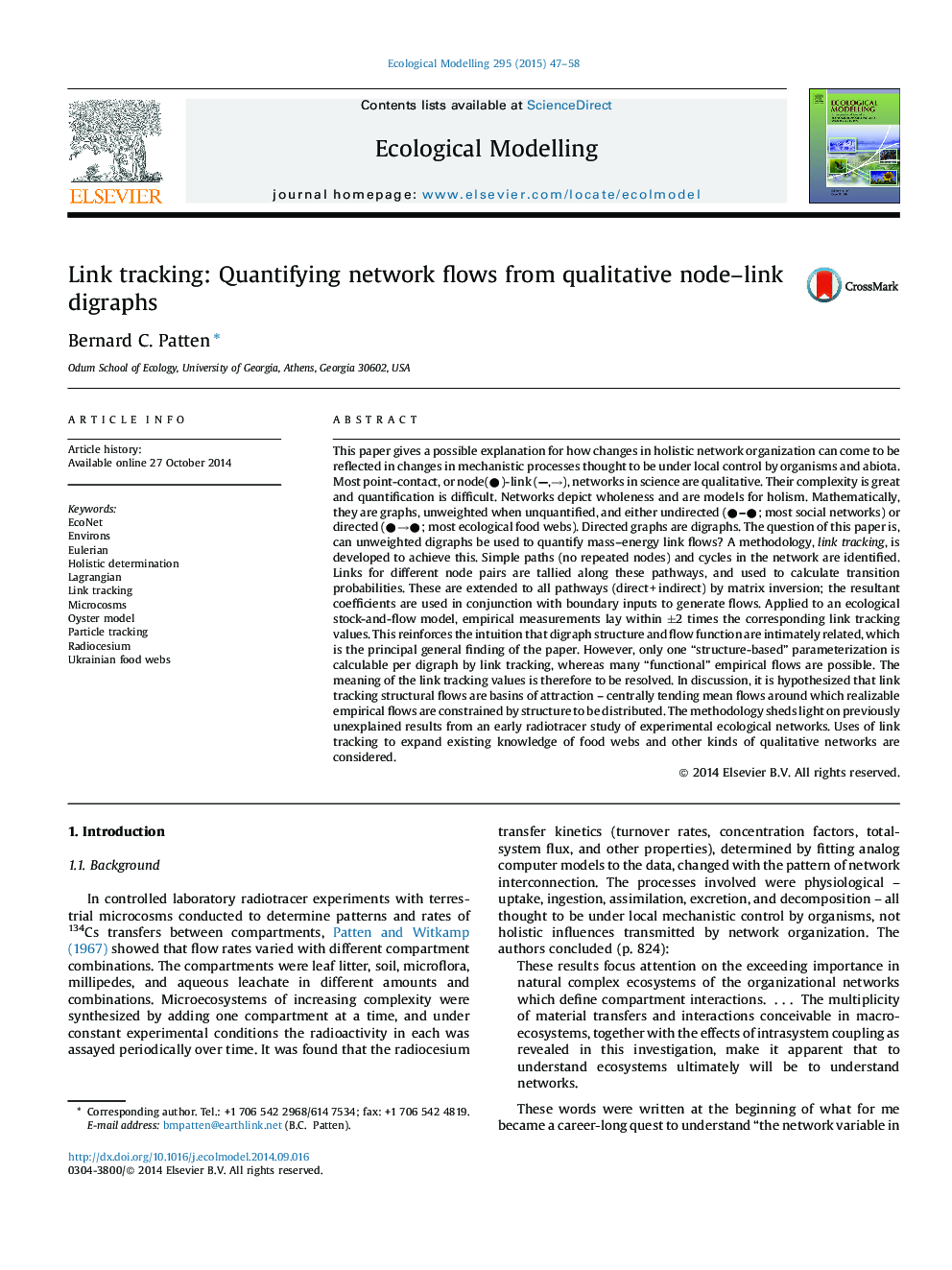| Article ID | Journal | Published Year | Pages | File Type |
|---|---|---|---|---|
| 4375863 | Ecological Modelling | 2015 | 12 Pages |
•Unweighted directed graphs (digraphs) are a common way to depict networks in ecology and other sciences.•In conservative flow–storage digraphs, such as food webs, nodes represent storages (standing stocks) and interconnecting links represent flows.•Stocks and flows, difficult to measure empirically, are widely held to be constrained by network structure, that is, digraph configuration; can methodology be developed to measure stocks and flows from graph structure alone?•Link tracking is developed as a methodology to quantify flows from qualitative digraph structure alone.•The methodology is described and applied to an ecological stock-and-flow model, with encouraging results.•As only one “structure-based” link tracking parameterization is possible per digraph, whereas many “functional” empirical parameterizations are realizable, the question arises as to the significance of the link tracking flows.•They are hypothesized to represent basins of attraction – centrally tending mean flows around which realizable empirical flows are constrained by structure to be distributed.
ABSTRACTThis paper gives a possible explanation for how changes in holistic network organization can come to be reflected in changes in mechanistic processes thought to be under local control by organisms and abiota. Most point-contact, or node(●)-link (—,→), networks in science are qualitative. Their complexity is great and quantification is difficult. Networks depict wholeness and are models for holism. Mathematically, they are graphs, unweighted when unquantified, and either undirected (●–●; most social networks) or directed (●→●; most ecological food webs). Directed graphs are digraphs. The question of this paper is, can unweighted digraphs be used to quantify mass–energy link flows? A methodology, link tracking, is developed to achieve this. Simple paths (no repeated nodes) and cycles in the network are identified. Links for different node pairs are tallied along these pathways, and used to calculate transition probabilities. These are extended to all pathways (direct + indirect) by matrix inversion; the resultant coefficients are used in conjunction with boundary inputs to generate flows. Applied to an ecological stock-and-flow model, empirical measurements lay within ±2 times the corresponding link tracking values. This reinforces the intuition that digraph structure and flow function are intimately related, which is the principal general finding of the paper. However, only one “structure-based” parameterization is calculable per digraph by link tracking, whereas many “functional” empirical flows are possible. The meaning of the link tracking values is therefore to be resolved. In discussion, it is hypothesized that link tracking structural flows are basins of attraction – centrally tending mean flows around which realizable empirical flows are constrained by structure to be distributed. The methodology sheds light on previously unexplained results from an early radiotracer study of experimental ecological networks. Uses of link tracking to expand existing knowledge of food webs and other kinds of qualitative networks are considered.
